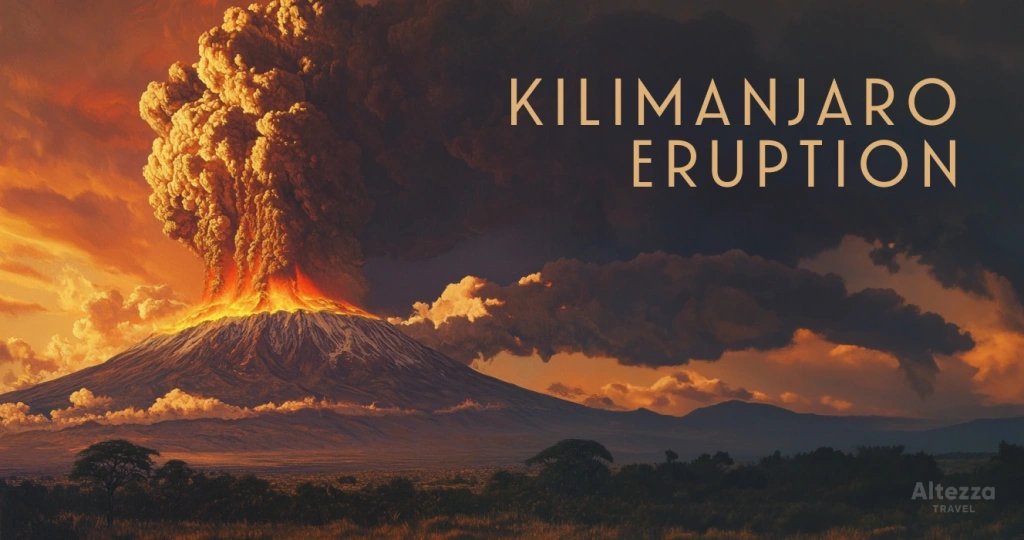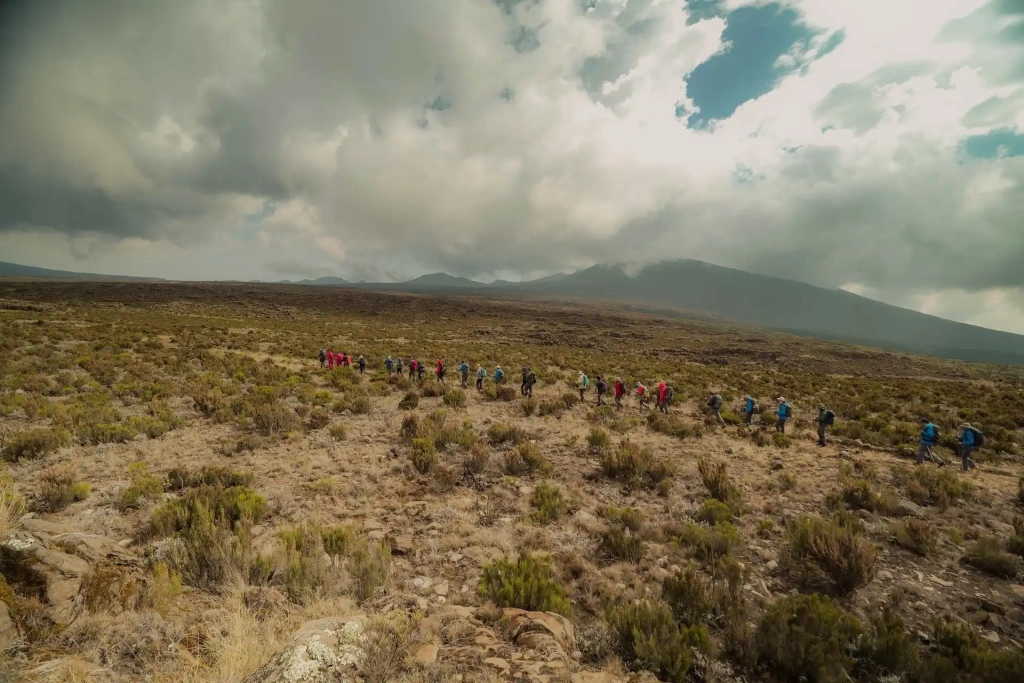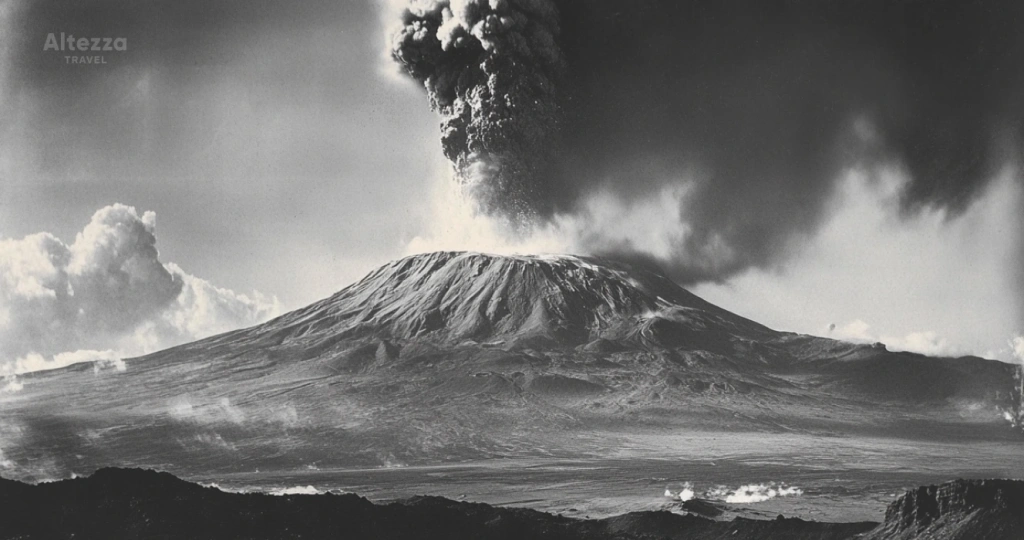Mount Kilimanjaro is a volcano and the highest free-standing mountain in the world, towering 5,895 meters (19,341 feet) above sea level. This iconic Tanzanian peak attracts adventurers who aim to climb Kilimanjaro.
When did Kilimanjaro last erupt? When do scientists expect the next Kilimanjaro eruption? And what type of volcano is it: active, dormant, or extinct? Altezza Travel answers all these questions.
Is Mount Kilimanjaro going to erupt?
New volcanic eruptions of Mount Kilimanjaro may be possible, but scientists do not foresee this happening soon. If the volcano does erupt, it will likely occur far in the future, and we will likely receive early warnings.
How can we track increasing volcanic activity? Deep beneath us, various processes or volcanic events would occur that researchers can detect. The main sign is the accumulation of magma beneath the earth's crust, ready to break through. This won’t happen silently and unnoticed, as magma will send signals:
- Its pressure will begin to alter the earth's surface, forming new bulges and depressions.
- The movement of magma will cause numerous small earthquakes near Kilimanjaro.
- When a large amount of molten material gathers under the crust, gravitational anomalies detectable by scientific tools will appear.
- As molten magma moves upward, the temperature of the soil and groundwater will rise, and springs will become more active.
- There will be increased emissions of volcanic gases: sulfur dioxide and carbon dioxide.
Even today, a faint sulfur smell is often observed at the summit of Mount Kilimanjaro, but it is very weak. This is due to the deep activity of the central volcano, Kibo. Gases gradually escape from small vents on Mount Kilimanjaro's slopes and crater, but at present, this does not indicate any potential eruptions in the future.
No one is predicting specific dates, but we know there are no signs of Kilimanjaro waking up right now.
How many volcanoes are on Kilimanjaro?
Attentive readers may have noticed that we mentioned Mount Kilimanjaro’s central volcano. Does this mean there are others? How many are there?
To be precise, Kilimanjaro is a mountain massif formed by three volcanic cones. It is located near the fault line of two tectonic plates.
Check out Altezza Travel's blog for more fascinating facts about Mount Kilimanjaro.
Shira is the oldest of the three. Having lived a vibrant life, it ceased its activity and collapsed. Now, in its place is the beautiful Shira Plateau. The next volcano to form was Mawenzi. It also went extinct, and in its place, you can find the inaccessible Mawenzi Peak, which only experienced mountaineers can scale.
The last to form was the Kibo volcano. Those climbing Mount Kilimanjaro aim for its summit, with a crater within a crater, sparkling glaciers, and the highest peak, Uhuru. Unlike the other two extinct volcanoes, Kibo is not considered extinct but rather dormant. It may erupt again someday.
When and how did Mount Kilimanjaro erupt in the past?
It all started more than 2.5 million years ago. On the eastern edge of the Great Rift Valley, molten magma from the earth's depths broke through to the surface, creating mountain formations. This is how the paleo volcano Kilema, the ancestor of the three volcanoes we see today, was formed. It seems to have been a long ridge.
Molten flows erupted from beneath the earth, scattering magma fragments in all directions. Today, volcanic deposits from this paleovolcano can be found on the shores of the Nyumba ya Mungu Reservoir, located 60 kilometers (37 miles) south of Kilimanjaro.
Then, 2.5–2 million years ago, the birth of Kilimanjaro itself began. The Shira volcano rose, spewing magma, volcanic ash, vapors, and gases. It reached an altitude of about 5,000 meters (16,404 feet) above sea level.
For about a million years, nothing much happened. Then, about one million years ago, east of Shira, volcanic activity resumed. Mawenzi began to form. The earth’s crust split open once again, allowing molten lava flows to escape. Two significant eruptions occurred, a few tens of thousands of years apart. These shaped the modern appearance of Mawenzi with its sharp, jagged rock peaks pointing upwards.
The unique shape of Mawenzi led to its name. In the local Chagga language, “kimawenze” means “broken,” “notched.”
Finally, in a grand symphony of fire, steam, and thunder, it was time for the majestic finale—the third volcano, Kibo, rose above the other two. This occurred about half a million years ago. The mighty Kibo erupted five times, spewing magma far and wide. Traces of its volcanic fury have been found even in neighboring Kenya. The ash and gas emissions were so strong that for a long time, massive ash clouds settled far from the volcano.
When was Mount Kilimanjaro's last eruption?
The last major eruption of Kibo occurred 150,000–200,000 years ago. Unlike active volcanoes that still erupt frequently, Kilimanjaro belongs to the category of dormant volcanoes. Some sources mention an eruption 200 years ago, but scientists have found no evidence to confirm this. Most likely, something akin to a collapse occurred, resulting in the formation of the inner Reusch Crater within the larger crater. Inside this crater, there is a fumarole pit, from which gases escape, creating the sulfur smell in the air. The surface temperature inside the inner crater reaches 78°C (172°F).
Kilimanjaro Tours
So, while Kilimanjaro is not an extinct volcano, it has not shown activity for at least 150,000 years. No risks of Kilimanjaro erupting are expected in the foreseeable future, making it safe to climb Kilimanjaro to the summit, enjoy the scenery, challenge yourself, and marvel at the stunning African glaciers near the equator.
Choose a suitable date for your expedition and prepare for a grand adventure! We will ensure your climbing Kilimanjaro tour is safe, comfortable, and truly memorable!
All content on Altezza Travel is created with expert insights and thorough research, in line with our Editorial Policy.
Want to know more about Tanzania adventures?
Get in touch with our team! We've explored all the top destinations across Tanzania. Our Kilimanjaro-based adventure consultants are ready to share tips and help you plan your unforgettable journey.





















